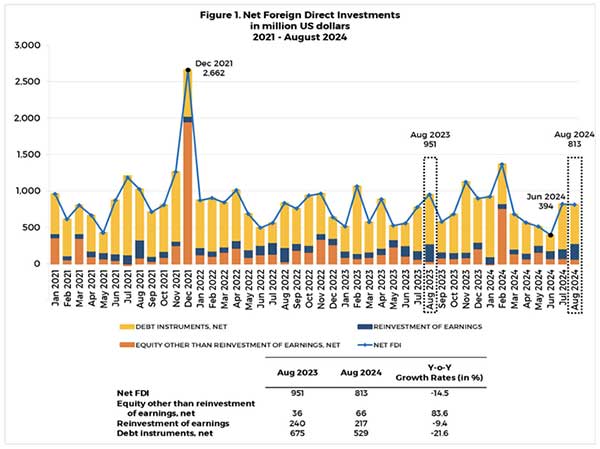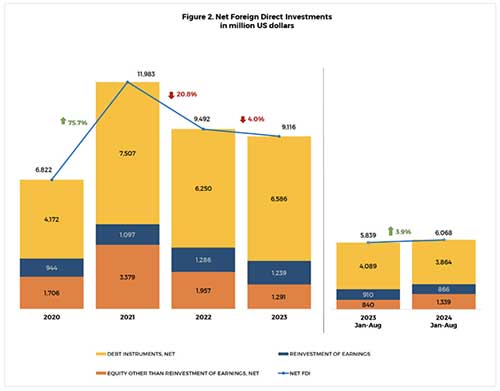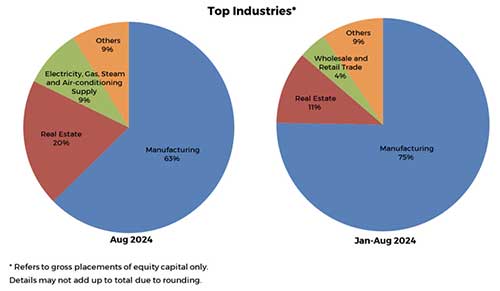Foreign direct investment (FDI) posted US$813 million net inflows in August 2024, 14.5 percent lower than the US$951 million net inflows recorded in August 2023 (Figure 1).1,2

The decline in FDI net inflows during the month was due mainly to the 21.6 percent contraction in nonresidents’ net investments in debt instruments to US$529 million from US$675 million.3
Nonresidents’ reinvestment of earnings also declined by 9.4 percent to US$217 million from US$240 million.
Meanwhile, nonresidents’ net investments in equity capital (other than reinvestment of earnings) expanded by 83.6 percent to US$66 million from US$36 million in August 2023.
These equity capital placements emanated largely from Japan and the United States and were mostly invested in the (1) manufacturing, (2) real estate, and (3) electricity, gas, steam and air-conditioning supply industries.
On a cumulative basis, net FDI inflows for the period January-August 2024 rose by 3.9 percent to US$6.1 billion from the US$5.8 billion net inflows posted in January-August 2023 (Figure 2).



1 BSP statistics on FDI are compiled based on the Balance of Payments and International Investment Position Manual, 6th Edition (BPM6). FDI includes (a) investment by a nonresident direct investor in a resident enterprise, whose equity capital in the latter is at least 10 percent, and (b) investment made by a nonresident subsidiary/associate in its resident direct investor. FDI can be in the form of equity capital, reinvestment of earnings, and borrowings.
2 BSP FDI statistics are different from the investment data of other government sources. BSP FDI covers actual investment inflows. By contrast, the approved foreign investments data that are published by the Philippine Statistics Authority (PSA), which are sourced from Investment Promotion Agencies (IPAs), represent investment commitments, which may not necessarily be realized fully, in a given period. Furthermore, the said PSA data are not based on the 10-percent foreign ownership criterion under BPM6. Moreover, the BSP’s FDI data are presented in net terms (i.e., equity capital placements less withdrawals), while the PSA’s foreign investment data do not account for equity withdrawals.
3 Net investments in debt instruments consist mainly of intercompany borrowing/lending between foreign direct investors and their subsidiaries/affiliates in the Philippines. The remaining portion of net investments in debt instruments are investments made by nonresident subsidiaries/associates in their resident direct investors, i.e., reverse investment.
















